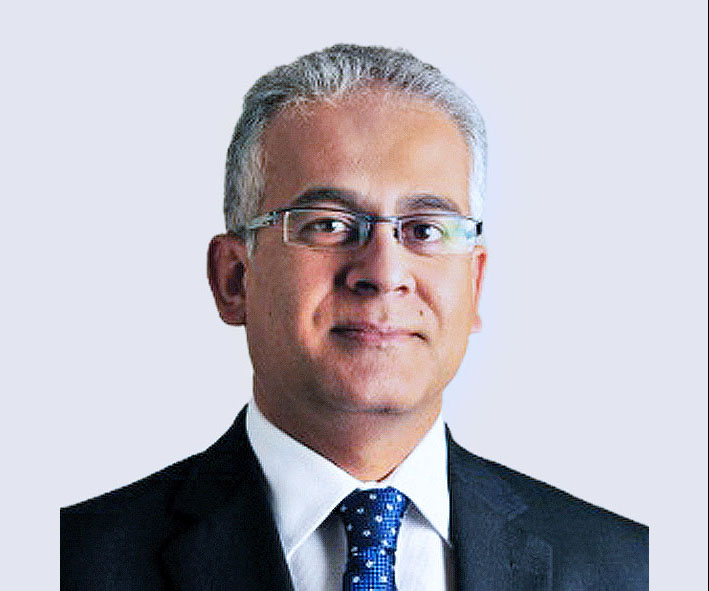Reinsurance is a business that is in constant flux. We caught up with Aon’s Reinsurance Solutions regional leadership to gain insights into the big issues facing the sector today.
One of the biggest questions facing the insurance sector in the region today concerns the lessons learnt from the pandemic that will help insurers manage future long-tail risks.

“A similar question was debated in a recent Aon fireside chat,” said CEO, APAC George Attard. “The panel agreed that although the pandemic was exceptional, it had been expected, having been part of many government and company risk registers for years. Yet the global response was often lacking.
“We have learned that it is critical not just to be aware of risk, but to be prepared for risk, and also that science and data can be trusted when properly analysed and presented. In this regard, we should also be more trusting of the data on climate change, where science and empirical evidence have shown us that the frequency and severity of catastrophes is increasing.
“The challenge is not only to pay attention to potential risk, but to act before an event happens, and this is an area where the industry can make improvements”. Aon’s recent research showed that, prior to COVID-19, 82% of companies did not consider pandemics or other major health crises as one of their top 10 risks.
Aon uses data, analytics and a global network of informed colleagues to help clients navigate new and existing risk landscapes, collaborating to offer tailor-made services that aim to address the unexpected, protect clients’ assets and enable them to continue to grow their organisations.
“In helping them to reduce volatility, we offer access to capital that aligns to their risk appetite, as well as assisting them to protect their most valuable asset – their people,” said Mr Attard.
What are the effects of Nat CAT in Asia Pacific on new business and renewals? Are insurers responding to climate change?

“Across Asia Pacific, catastrophe modelling continues to underpin much of the property-based analytics, but now there is the added complexity and need to include aspects associated with the impact of climate change, and this requires the use of more complex data and applied analytics,” said head of APAC analytics Peter Cheesman.
“Surveys of reinsurers suggest that they are already factoring climate change into their pricing. This is placing greater emphasis on the analytical capabilities we provide to our insurance clients to demonstrate that in many cases the inclusion of future long-term climate impacts can be overly cautious. The current catastrophe models coupled with more recent peril statistics and insurers’ own loss experience remain valid for shorter-term loss estimates.
“However, catastrophe models, such as those from Impact Forecasting, are adapting their methodologies to enable future climate scenarios to be included in the analysis, incorporating the use of AI and predictive algorithms to process the ever-increasing volume, temporal change and granularity of data.
“Aon is at the forefront of these types of analytics, and with increased investments in Impact Forecasting, partnerships with leading institutes in the field of climate impact, such as Columbia University, and establishment of specialist peril research teams, we help clients navigate the evolving volatility challenge of climate change,” Mr Cheesman said.
Do you have a forecast for business in the region as we ‘start to emerge’ from the pandemic?

“As Asia begins to normalise and open-up its borders, we can expect to see a resurgence in travel-related business which has been hit hard by the pandemic as well as the associated service sectors,” said CEO, Asia Richard Jones.
“Generally, P&C lines have been remarkably resilient and the recommencement of infrastructure projects for both government and public-private partnerships will create significant opportunities for our clients across Asia. Exports are up double-digit in some territories, and strong growth is expected in the manufacturing and commodity sectors for 2022.
“One area of focus for both the P&C and life segments will be the access to data produced over the course of the pandemic, which will allow us to provide more insight and analysis and enable our clients to make better informed decisions regarding future risk mitigation and management. There has been some activity and discussion around pandemic pools, and we would expect focus to increase in this area as the data emerge.
“Loss activity for 2021 across the region has been relatively benign and reinsurer behaviour has been territory, performance, and exposure-specific. We expect the market to be consistent for the 1 January 2022 renewals despite the recent loss activity in Europe and the US,” said Mr Jones.
Looking to Japan …

Head of global clients, Japan Philippe Sommer said, “Japan is re-energising after what looks like the worst of COVID-19 is over; with the recent Olympics medal count having infused a revived local optimism, and a new prime minister pushing stimulus post pandemic, the macroeconomics picture looks encouraging for the economy and the insurance sector the same.
“The non-life industry continues to enhance coverage for natural catastrophe perils, but also evolving customer needs like cyber and flood drive industry growth. Accounting changes in the form of IFRS17 from 2023, and economic solvency implementation from 2025, should add to market dynamics in the mid-term future.
“The Japanese (re)insurance sector has been impacted in recent years, in particular by typhoon activity. As a welcome relief and change, 2021 has developed fairly calmly thus far in terms of claims, both in the catastrophe and non-catastrophe areas. Whilst Japan isn’t isolated from global industry trends and price developments, clients should be able to take a more optimistic view on the upcoming renewal at this stage.
“Aon’s Japan team further invests in helping clients better understand the risk of natural perils and the impact of climate change, not least as wind and flood are key natural perils driving the local re/insurance market, besides earthquake,” said Mr Sommer.
… and to China

“In the China P&C market, COVID-19 hasn’t had a noticeable effect on the primary and reinsurance market, with very little business interruption coverage bought and consequently little exposure to loss,” said CEO, Greater China Qin Lu. “The industry suffers more from the slowdown of the P&C insurance premium growth, and the prolonged low interest rate environment than the actual insured losses caused by the pandemic.
“In China’s life and health market, similarly, the claim impact on business is also minimal – the disease is not covered, but hospitalisation cost is borne by the government. However, it did create significant impact to sales channel; for instance, the total number of agents decreased by 2m to 7.7m, where the pandemic caused difficulty for agents reaching clients offline. At the same time, it brought an unprecedented opportunity for online insurance sales, evident in the significant increase of new users of leading sales platforms.
“The Henan flooding in China has marked the highest insurance pay-out in the Chinese insurance industry, with motor losses contributing to more than 50% of the CNY12bn ($1.88bn) insurance bill, which is rarely seen for historical catastrophe events. This event has reminded of the evolving challenges to the P&C market with new exposure types such as electric cars,” said Mr Qin.
Australia and New Zealand

“As the Pacific region emerges from the pandemic, it does so with economic activity largely prompted by government investment and pent-up consumer demand,” said CEO, Australia and New Zealand Rob de Souza. “GDP is forecast to grow by more than 5% in 2021, settling at around 4.5% in 2022 with unemployment anticipated to drop to pre-pandemic levels late next year.
“There is increasing business confidence supported by strong insurance growth projections; reinsurance capacity remains abundant for property, and pricing has become increasingly competitive.
“Challenges remain in some liability sectors, for example bushfire and financial lines, as pricing and capacity has hardened both in the insurance and reinsurance markets, and there is ample opportunity for capital and product in this space, and also in the nascent field of cyber (re)insurance, to meet growing business complexity and demand.
“The cyber opportunity is increasingly important, and the industry is working hard to develop appropriate products to meet business requirements, for which they need sustainable support from reinsurers.
“Insurers are also busily working closely with the federal government taskforce in determining the structure of the proposed cyclone reinsurance pool that is due to commence in Q3 2022, and has the potential to be very impactful to northern Australia insurance exposures,” said Mr de Souza. A